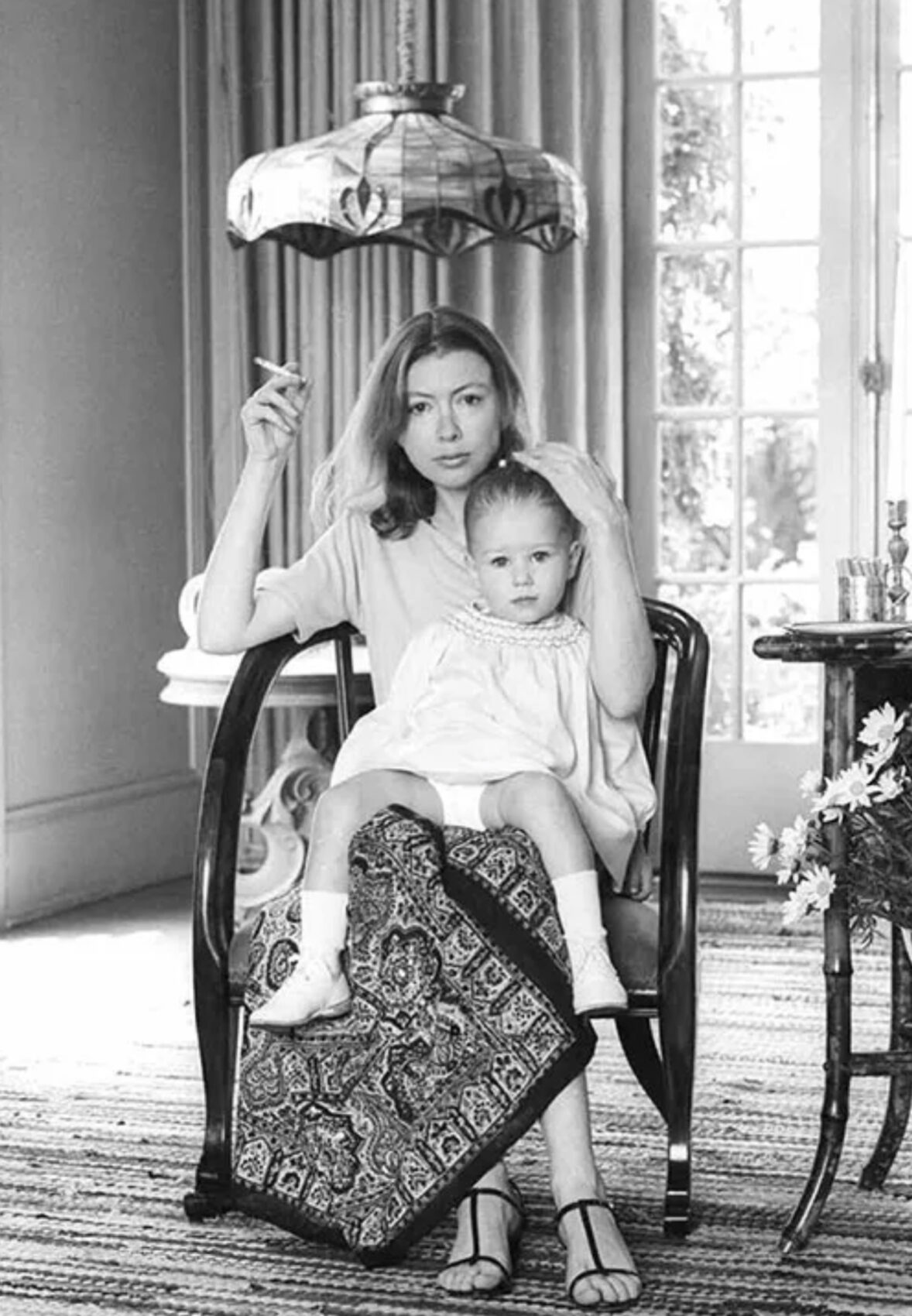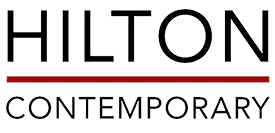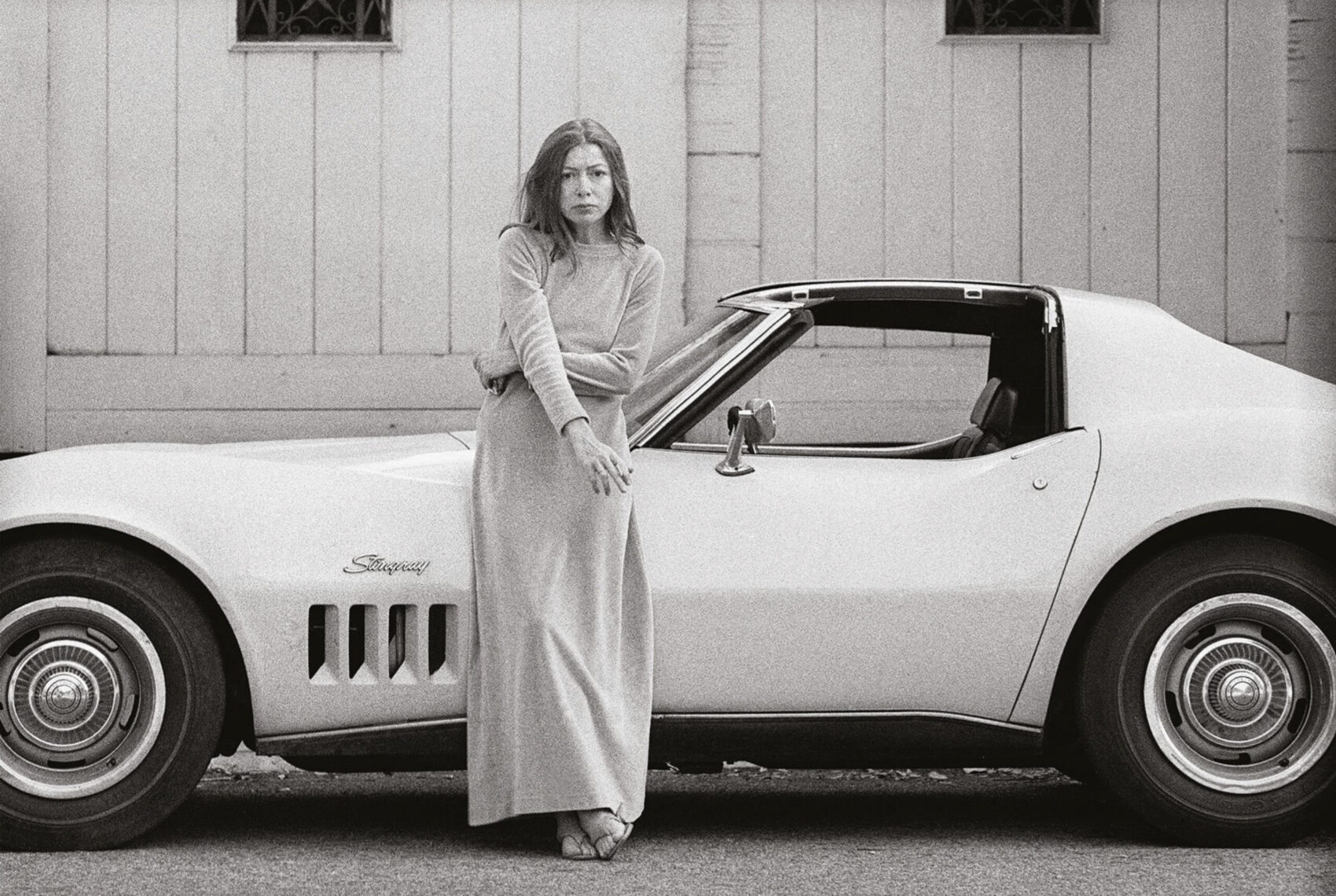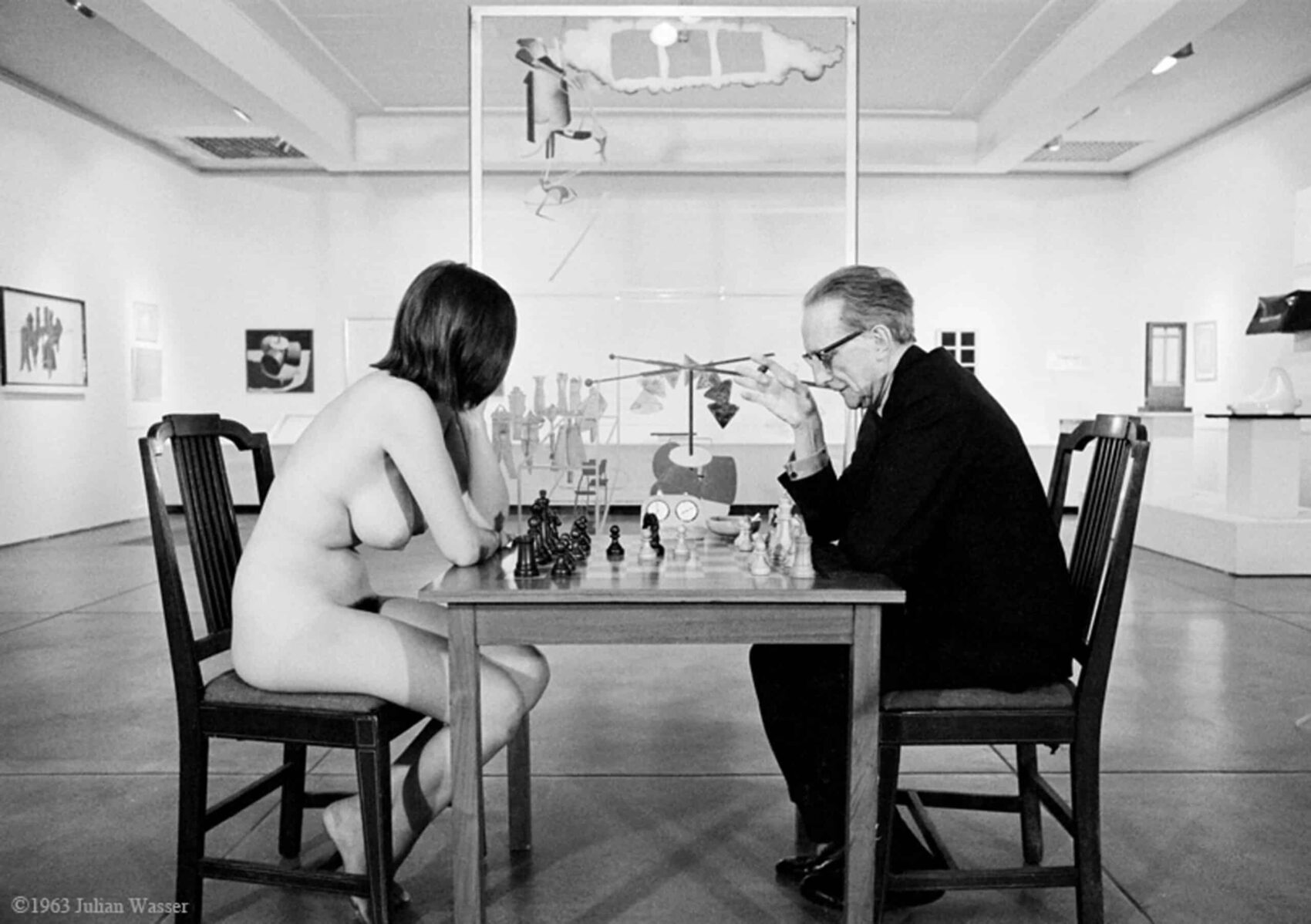Janet Davies
Joan Didion Remembers the Day Julian Wasser Took Her Portrait
Janet Davies
Vogue spoke with Joan Didion and Julian Wasser about his portraits of her, now in Wasser’s new monograph, The Way We Were.
BY ABBY AGUIRRE
Shortly after Slouching Towards Bethlehem was published, in 1968, Timemagazine commissioned portraits of Joan Didion by the photographer Julian Wasser. You know the series: a young Didion in a long-sleeved dress and sandals, standing in front of her Corvette Stingray, a cigarette dangling from her right hand. Two of these portraits appear in Wasser’s new monograph, The Way We Were, published recently by Damiani, alongside many of his other seminal photographs: Steve McQueen exhaling a cloud of cigarette smoke; Robert F. Kennedy five minutes before he was shot; Roman Polanski kneeling near the entrance of the house on Cielo Drive, the word PIG,scrawled in blood by the Manson family, faded but still visible on the door.
Of all the pictures he took during those years, Wasser says, speaking by phone from Los Angeles, the ones of Didion were “a big event in my life.” “I’d read her fiction,” he says. “It was very L.A. She didn’t miss a thing. She was such a heavyweight person.” Wasser shot Didion on the Strip and at her rented house on Franklin Avenue in Hollywood, where she lived with her husband, the writer John Gregory Dunne, and their daughter, Quintana Roo. “It was a very nice, cozy house,” Wasser remembers. “And she was a very easy person to talk to. It was like a dream. Quite nice and relaxed. No Hollywood phoniness.” Vogue asked Didion, too, for her memories of the shoot.
These portraits were commissioned by Time in 1968, just after Slouching Towards Bethlehem was published to great acclaim. What do you remember about this moment in your life?
I think someone said that the picture had been taken under circumstances that it hadn’t. What do I remember? I can’t say what I remember. I had a baby. I was living in a rented house in Hollywood. It was kind of a wonderful period of my life actually. Not because I was in a rented house in Hollywood. But just in general.
As a writer and reporter, was it strange for you to be the subject of a story? To be appearing in Time?
I don’t think it was the first time I’d been written about. The whole thing was strange. Yes, it was strange to be written about. But that probably wasn’t the first time. I loved having pictures of me with the baby. The one where she has sort of—the one that shows her hair pulled up tight? I love that picture. I love that picture. That was also at Franklin Avenue. Most of what Julian Wasser took was at Franklin Avenue.
Was this the first time you met Julian Wasser? Were you familiar with his work?
I was very familiar with his work because I was writing for magazines then and he was at the Time bureau. Any time anyone was shooting in L.A. for Time and Life, they were shooting with Julian. He was just somebody I knew very well.
What details do you remember about that day? Does anything in particular stand out to you now?
I can’t remember anything specific that stands out about the day. I don’t know how we decided to include the Corvette. It must have been some whim of Julian’s.

He said it was not his whim. He said, “You don’t tell a woman like that what to do.”
[Laughs] Oh, really?
Had you thought about what you were going to wear, or were the long dress and sandals just what you happened to have on?
I remember the long dress. I remember being out on the Strip in a long dress. Why, I can’t imagine.
Do you remember buying the Stingray?
I very definitely remember buying the Stingray because it was a crazy thing to do. I bought it in Hollywood.
What color was the Stingray?
The Stingray was Daytona yellow. Which was a yellow so bright, you could never mistake it for anything other than Daytona yellow.
Did you like these photographs of you?
The picture with the baby—I would say that was my favorite picture ever. Julian took beautiful pictures. Anybody who had their picture taken by Julian felt blessed.
How did you feel about the article?
I don’t remember the article. I remember the pictures.
Legendary photojournalist Julian Wasser reflects on career, discusses Chicago exhibit
Janet Davies
CHICAGO (WLS) — Julian Wasser has witnessed Hollywood through a camera lens for well over half a century, capturing images of stars from Jack Nicholson to The Beatles, and he even got one of the very last pictures of Robert Kennedy before his assassination.
The view can be seen in a special exhibit, “Julian Wasser: The Way We Were,” a photographic time capsule of the 1960’s and 1970’s.
ABC7 Chicago’s Janet Davies talked to him about his new exhibit that opened Friday in River North.
Wasser began shooting spot news in the nation’s capital at a tender age.
Julian Wasser: “Every night I would climb out my bedroom window and steal my father’s car when I was 12 and take pictures, and they’d be on the front page of the Washington Post. My father would say ‘look, there’s another Julian Wasser in Washington.’ I said ‘yeah dad.'”
Later Wasser’s camera took him to New York then Los Angeles, shooting stars for publications like Time Magazine, Vanity Fair and Life Magazine.
Wasser: “Most photographers would get a star, line them up against a wall and stand there and don’t say anything. They would wait for the star to do something, I can’t stand that. They want direction. I gave lots of directions. They liked that and worked well with that. That’s why pictures look the way they do.”
Wasser’s career has spanned over six decades, and each of his iconic photographs has a story.
Wasser: “The Beatles, which was taken in London in Soho. Jayne Mansfield was at the Whiskey, I was shooting for Life Magazine. David Bowie, I was working for him, shooting at the Hollywood Bowl at one of his concerts.”
Janet Davies: “How about that Hugh Hefner photo on roller skates?”
Wasser: “He had incredible luck with women, didn’t he? He was actually a very, very nice guy, very sweet guy, he treated those girls like queens.
Davies: “What about the Marilyn one?”
Wasser: “I wanted to look at her, so I sat at her feet like a lap dog and took the pictures; she didn’t even know I was there, she’s a star!”
Wasser’s iconic photos are on display at the Hilton-Asmus Contemporary Gallery through September 30th.
“Julian Wasser: The Way We Were” runs through September 30th at the Hilton-Asmus Contemporary Gallery.
Wasser will be at the exhibit Friday from 6:45 p.m.- 9 p.m.
Hilton-Asmus Contemporary
716 N. Wells St., #3739, Chicago, IL 60654
www.hiltoncontemporary.com


